The Soviet 4x4 SAM
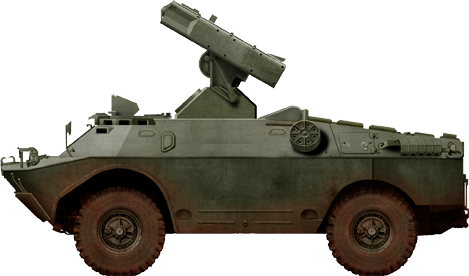 The Soviet-built BRDM-2 (1961) was a success story 4x4 armored car, with more than 7,400 built, largely exported and turned into several variants. Among these were specialized vehicles to bring organic defense to tanks and rifle regiments, the anti-tank 9P133 Malyutka and 9P148 Konkurs, and the 9P31 Strela-1 SPAAML (Using the SA-9 "Gaskin" missile) for medium-range AA defense. This SAM carrier remains an important percentage of the total production (one sixth), and was a low-altitude system, completely modified for the purpose.
The Soviet-built BRDM-2 (1961) was a success story 4x4 armored car, with more than 7,400 built, largely exported and turned into several variants. Among these were specialized vehicles to bring organic defense to tanks and rifle regiments, the anti-tank 9P133 Malyutka and 9P148 Konkurs, and the 9P31 Strela-1 SPAAML (Using the SA-9 "Gaskin" missile) for medium-range AA defense. This SAM carrier remains an important percentage of the total production (one sixth), and was a low-altitude system, completely modified for the purpose.
Development
It started at the Nudelman OKB-16 design bureau in 1960 (now the Moscow-based KB Tochmash Design Bureau of Precision Engineering) so even before the BRDM-2 was completely finalized, to include a range of possible adaptation and derivatives. The Strela-1 air defense system was created as a means of direct cover for motorized rifle and tank regiments from enemy air strikes.The development of the complex was started in accordance with the Decree of the Council of Ministers of the USSR of 07/25/1960, simultaneously with the Strela-2 MANPADS. The Strela-1 air defense system was a fallback due to the high technical risk of creating MANPADS and was developed as a light portable anti-aircraft system, consisting of two parts weighing 10-15 kg each. It was intended to combat air targets operating at speeds up to 250 m/s in the altitude range from 50-100 m to 1000-1500 m at a distance of up to 2 km. However, both complexes were created and put into service at the same time.
The lead developer of the Strela-1 complex (9K31) as a whole and the missile defense system (9M31) is OKB-16 GKOT (now Tochmash Design Bureau named after A.E. Nudelman), chief designer A.E. Nudelman. The homing head for the missile was developed by TsKB-589 GKOT (TsKB Geofizika), chief designer V.A. Khrustalev.
In connection with the successful development of the Strela-1 air defense system and the Strela-2 MANPADS, which had almost the same characteristics, it was decided to continue their creation as a regimental and battalion air defense system, respectively. At the same time, the task was set to increase the range (up to 5000 m) and height (up to 3500 m) of hitting targets of the Strela-1 air defense system, as well as place it on a car chassis. This provided for an increase in the mass (from 15 to 25 kg) and dimensions (diameter from 100 to 120 mm and length from 1.25 to 1.8 m) of the rocket.
The first launches of missiles with a seeker, operating on the principle of photo-contrasting target identification against the general background, confirmed the possibility of creating a complex in accordance with the requirements of the GRAU of the Ministry of Defense.
After successful state tests, the air defense system was adopted (Decree of the Central Committee of the CPSU and the Council of Ministers of the USSR of 04/25/1968). The State Commission recommended continuing work to expand the zone of destruction of the complex, increase the efficiency of its firing and the accuracy of determining the boundaries of the missile launch zone.
Serially, the Strela-1 air defense system was produced by the Saratov Aggregate Plant MOP (combat vehicle 9A31) and the Kovrov Mechanical Plant MOP (rocket 9M31).
Design
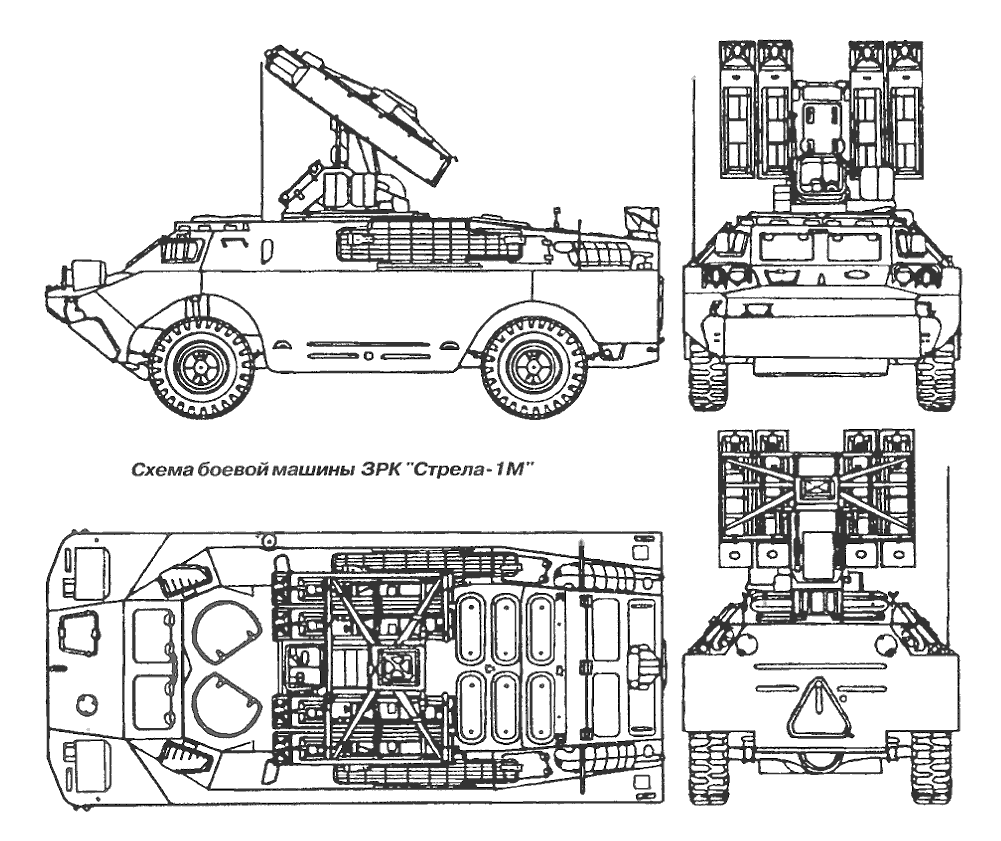
General design scheme. Note: Proportions are off.
Essentially the external hull and most components of the original BRDM-2 were kept, but the belly wheels were removed, loosing some traction over uneven terrain, but freeing a lot of internal space, which was the goal. The rear (former troop compartment) was completely gutted, and refitted to house an elevation system and operator station, plus its traversing mast at the base, supporting a four launcher ramp on top, external and foldable, over the location of the former turret.
The whole ramp was lowered when traveling to avoid encroaching in obstacles, notably in forested areas. In addition to the four ready missiles, there were eight more in store. The ramp was articulated and allowed to the launcher to be lowered to roof level, making also the vehicle more discreet while not in operation. When the launcher was erected almost vertically, the total height of the vehicle rose to 4.2 meters.
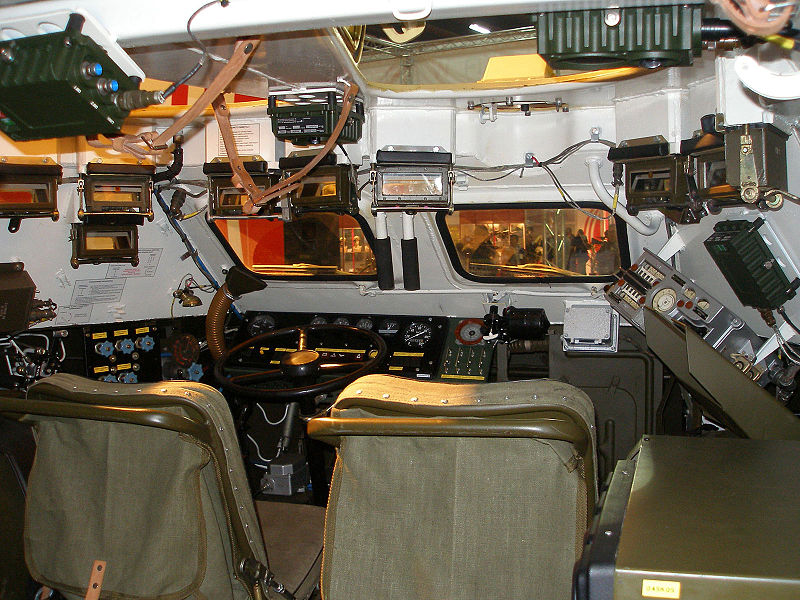
Interior of the BRDM-2M driver compartment
The crew of three comprised a driver, a co-driver seated at the front, behind windows shielded by armoured shutters, and sights on each corners, plus a two roof hatches dotted with five sights on either sides.
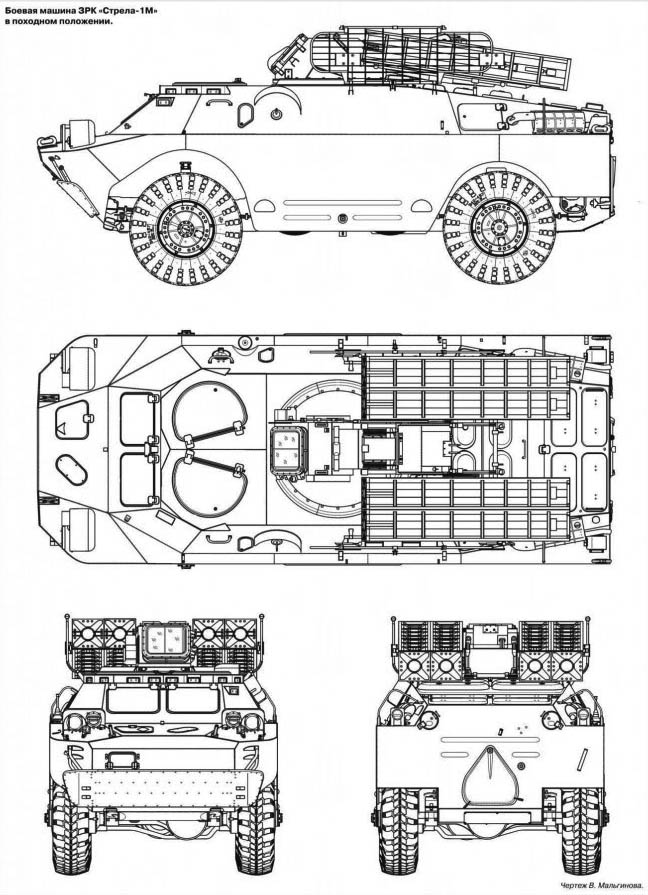
More accurate blueprint of a Strela with folded down launcher
Propulsion & tactical mobility
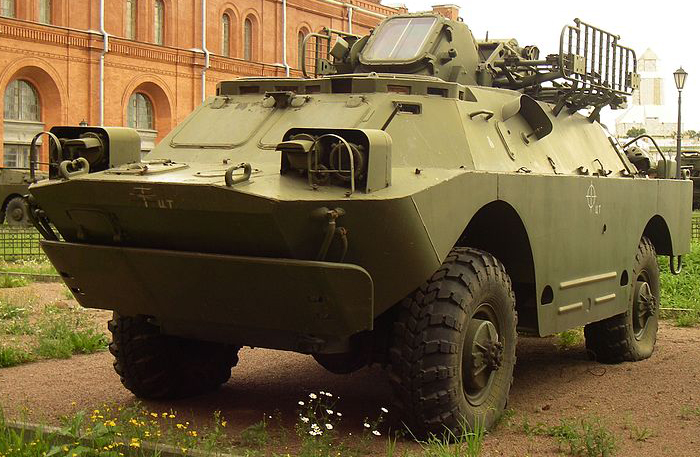
9K31 at the Military history Museum, Artillery Engineer Signal Corps, St-Petersburg, Russia
The original BRDM's GAZ-41 V-8 petrol engine rated for 140 hp at 3.400 rpm. It was kept, for best performances, way better than the original GAZ-40PB V8 of the early serie. It had a power to weight ratio of 18.2 hp/tonne, for a top speed in excess of 100 kph on road, probably around 50 off-road, due to sensitive equipments onboard, and 10 kph on water, when swimming. it was coupled with a Manual, 4 forward, 1 reverse gearbox.
As a Wheeled 4x4, even deprived of its auxiliary wheels, the main train with large tyres provided enough traction on mud and snow. They were using leaf springs suspensions, doubled by hydraulic shock absorbers. The military-grade reinforced 13.00 x 18 tyres had a tread of 1.84 m and wheelbase of 3.1 m. No run-flat tyre system, but a central tire pressure control system to manage mobility on very soft terrain.
The 9K31 Strela 1 had a 9 meters turning radius, a ground clearance of 0.43 m (17 in), and it was able to climb a 0.4 m obstacle, gap a 1.25m trench, and climb a 60% gradient. Fuel capacity was 290 liters (64 imp gal; 77 US gal) which was enough for an operational range of 750 km (470 mi) in one go.
The 9K31 Strela-1 was made amphibious with its hull fully sealed, and with a front trim vane that could be erected to cross a moderate river (up to one meter depht) and had enough buoyancy to float. When doing so, a bilge pump was activated, propulsion relying on rear water-jets, each with their own carenated four-bladed propeller; They were powered by a shaft extension linked to the main transmission. Both were protected by an armored shutter while travelling on land. The 10 kph when swimming could be sustained for 17, and up to 19 hours.
Among other equipments, the vehicle had an Intercom and a long range radio, some limited field tooling, personal weapons for close defence (AK-47 and pistols) and it had a collective NBC. Standard type, including overpressure. There was also the usual spall lining, white coating inside to stop flying fragments resulting from impacts.
Still on the register of protection, the vehicle was protected by a steel hull, with 7mm all around armour plating (0.3 in). There was no smoke dischargers for active concealment, and the belly was flat, making the vehicle vulnerable to mines and IEDs. The vehicle was not designed to be airdropped, but could be airlifted in standard heavy duty planes.
Armament: 9M31/NATO SA-9 "Gaskin"
The 9P31 weapons system in the sum, in Soviet nomenclature, of the 9M31 missile system, and its vehicle TEL, 9K31. The "M" referring to the missile, "K" to the launcher vehicle and "P" the whole weapons system.The 9P31 (US DoD designation and NATO SA-9A "Gaskin-Mod0") developed alongside the carrier vehicle was a medium to short interection missile. It could hit reliably a target within the 900 to 4200 range or for other sources, 800 to 6500 m (0.5 to 4 miles), but there were obviously larger envelopes in both senses in absolute terms, with quickly falling first hit probability.
The missile was most effective on targets about 220 m/s up to 310 m/s (792-1116 kph). It had a mass of 32 kg, and length of 1803 mm, diameter of 120 mm, 0.36 m wingspan. It carried a 2.6 kgs Warhead of the Frag-HE type using a RF Proximity fuse and was propelled by a single-stage Solid-fuel rocket motor for an overall range between 4,200 metres (2.6 mi) and 6.5 kilometres (4.0 mi) and even 8 kilometres (5.0 mi) for the 9M31M. Flight altitude max, was 3,500 metres (11,500 ft) and it travelled at Mach 1.8, guided by photocontrast Lead(II) sulfide infrared homing seeker (IR seeker) of 1–3 μm and/or 1–5 μm wavelength.
The warhead was designed to impact the target directly, with both contact and magnetic fuzes and back-up optical proximity fuze in case of near-miss, and in that case, a safety mechanism setup if the eeker could not find the target after 13–16 seconds. In that case, the the warhead safety mechanism was engaged, preventing any detonation upon impact.
Propulsion was ignited a few meters from the launch tube, which catapulted it, to avoid the jet blast burning the vehicle. The launcher used a throw-out charge, which ejected the missile from the canister, still trailing a wire, which once it was severed, ignited the missile, always leaving a margin of safety above the vehicle.
The seeker used uncooled lead sulphide (PbS) for its detector elements and singular tracking mechanism. The PbS was deigned to aim at very hot objects in very short wavelengths, limiting heat-seeking to rear-hemisphere engagements. However propeller-driven aircraft and helicopters still could be targeted depending on how the missile was close and near a very hot exhaust, IR-visible. The missile seeker head used the PbS elements it tracked a change of radiation from the target, compared to the background.
This photocontrast homing's amain advantage over traditional heat-seeking homing systems, still with PbS elements, was its negates the complete lack of front engagement capability. The system allowed to engage incoming jets, useful if the latter were about to his the vehicle... The drawbacks were rather strict meteorological conditions, clear sky or solid overcast, and about 20 degrees away from the sun, 2 degrees above horizon. These were common enough to make the whole system viable over most battelfields around the globe.
In the end, the Strela-1 was the only ADA system in Soviet tank/motorized rifle regiments able to engage approaching targets at relatively close range, besides more tradtional SPAAGs, or ZSU types, which completed this sytem ast even closer range. The Strela-2 used a different system and engaged enemy targets in tail-chase mode, whih was a problem for ground attack jets since they usually already delivered their offensive payload.
The operator was seated in front of the ramp, facing forward, with in an enclosed tunnel with its own windowed hatch. He used a board displating all useful command for the azimuth and elevation pointing of the launcher, then TV screen to follow the missile course, while having a PP-61AM sight. The mount was capable of +20 to +80° elevation, with an electrically powered traversed of 360°, at 15-20°/s rate. It was not stabilized, but able to fire on the move, at limited speeds.
Specifications 9K31 Strela-1 | |
| Dimensions | 5.8m oa x 2.4m x 2.3m travelling, folded down |
| Total weight, battle ready | 7 tonnes |
| Crew | 3 (driver, commander, operator) |
| Propulsion | GAZ 41 V-8 water-cooled petrol 140 hp at 3,400 rpm, 20 hp/t |
| Suspension | Torsion bars |
| Speed (road) | 100 km/h (road), 10 kph swimming |
| Range | 750 km ( mi) for 290 litres |
| Armament | Four 9M31/M SAM, infrared homing guidance |
| Armor | 5–14 mm (0.25 - 0.5 in) |
| Total production | 1,966 from 1966 |
Variants:
Known variants have resupply racks on the upper sides of the hull, and/or the passive radar detection system 9S12 (FLAT BOX A) plus three sensors for the command vehicle in each platoon.Soviet 9K31M SAM system
Design from 1969 it was an upgraded variant operatinf the 9M31M missile, accepted to service after state trials in 1968. Also called 9M31M "Strela-1M" (NATO SA-9B "Gaskin-Mod1") in entered service in 1970. It had better performance characteristics, heavier warhead (3 kg) had a more accurate guidance system, extended range, rated up to 8000 m (0.35 to 5 miles), which this diverged among sources.Romanian CA-95M SAM system
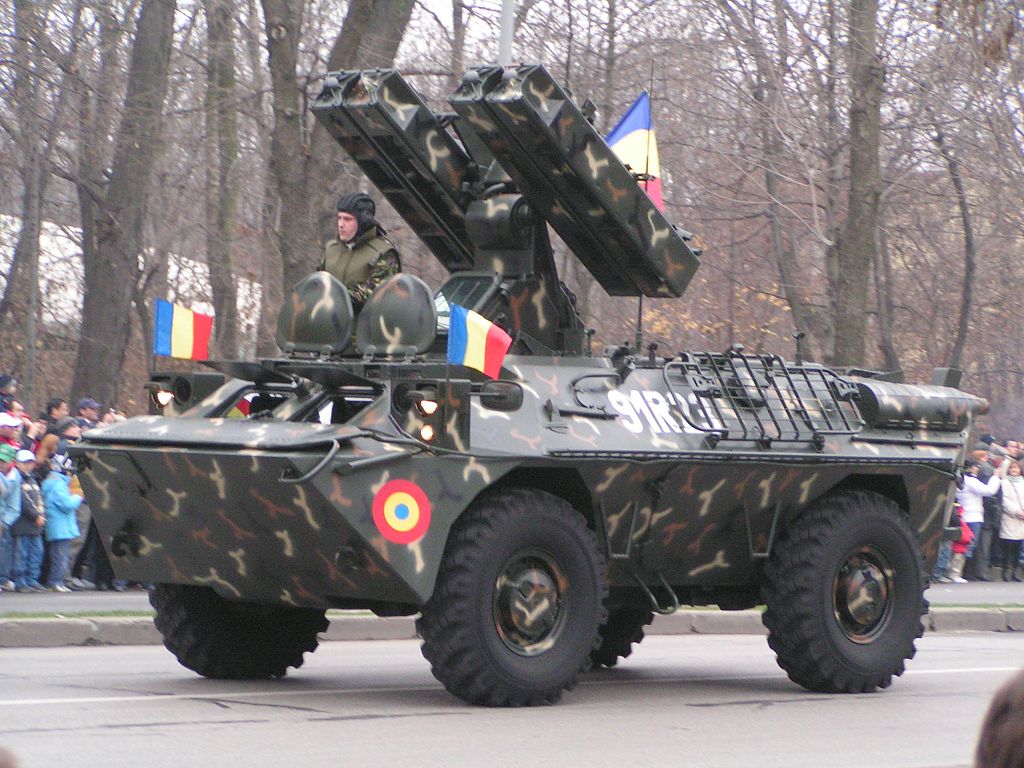
This version, which is accompanied by a locall-produced licenced version of the missile, is based on the Romanian TABC-79, a 4x4 derivative of the TAB-71, local version of the BTR-60 APC. The vehicle deployment in the same in Romanian motorized regiments.
Exports:
The 9K31 Strela-1 was used by all Warsaw pact countries: Czechoslovakia (4 only), East Germany (96 acquired 1977-1981), Yugoslavia (unknown, about 100), Poland (16 launchers from 1974, retired 1994) but with missiles produced at the Mesko arms factory, Skarżysko-Kamienna. Later, after the fall of USSR, it saw action with Slovenia, Croatia, and Serbia in the 1990s Yugoslavian wars. It was also used by South Yemen and famously by the Iraqi army during the 1991 gulf war.Other operators, some still active today, includes Algeria (46), Angola (20), Armenia, Benin (4), Bulgaria (50), Cuba (60), Croatia (still 9), Bosnia Herzegovina (34), Egypt (20), Ethiopia, Hungary (28), India (400. 200 in 2012), Libya (60), Mauritania (4), Mongolia, Mozambique, Nicaragua, Romania (48 derived CA-95), the Sahrawi Arab Democratic Republic, Serbia (56), South Africa (evaluation of Captured vehicles), Syria (20), Uganda, Ukraine, Uzbekistan, Vietnam and Yemen (circa 24). It saw action in the 1973 Arab–Israeli war and 1980s Lebanon war, the Western Sahara War, South African Border War with Angola, Iran–Iraq War, Gulf War and 2003 invasion, and more recently the Syrian Civil War, and the actual Yemeni Civil War, and possibly in Ukraine in 2022.
Combat service:

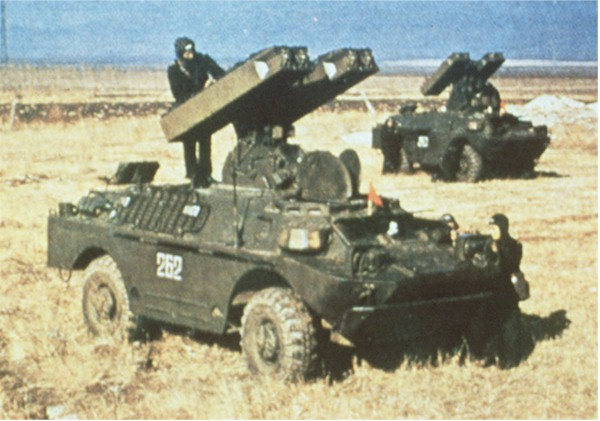
Early vehicles in manoeuvers, 1960s
The Strela-1 was deployed in specialized air-defense composite batteries in Soviet motor rifle regiments, and tank regiments. There was organically in eahc, a gun platoon of four ZSU-23-4 Shilkas, and SAM platoon of four Strela-1 vehicles. These were all close defence. Long-range defence was assumed by specialized platoons and larger carrier vehicles, independently joint to the rifle/tank regiments, but present organically at division level.
The typical Strela-1 platoon had a single command vehicle which was the only one fitted with a passive radar detection system (NATO FLAT BOX A) used as early Warning Receiver at longer range, while the other three lacked it. This radar detection system was the 9S16 "Flat Box", four sensors mounted around the BRDM, for a 360° cover, emitting no radar energy but still able to detect radio waves from incoming aircraft. The location helped also the acquisition of the target with the optical system on all vehicles. Typical tactic was to launch two missiles at once, from each vehicle, and against each target, in order to increase hit chances.
The Soviet and later Russian vehicle found not combat use, but as it was widely exported, it saw plenty of action around the world. Now discarded or sold, the Russian ground forces allegedly still maintained some 200 9K31M as of 2012 and the Russian marines had about 50 9K31M (and 9K35) at the same date, so perhaps 25 of each. Now (in 2022) it is completely obsolete. It was indeed superseded by the 9K35 Strela-10 since the fall of USSR.
Sources & links
arms-expo.ruarmoured.vif2.ru
globalsecurity.org
weaponsystems.net
en.topwar.ru
wiki
Cooper, Tom (2017). Hot Skies Over Yemen, Volume 1: Aerial Warfare Over the South Arabian Peninsula, 1962-1994. Solihull, UK: Helion & Company Publishing
Lappi, Ahti: Ilmatorjunta kylmässä sodassa
Petukhov, Sergei I., Shestov I.V.: Istorija sozdanija i razvitija vooruzhenija i vojennoi theniki PVO suhoputnyh voisk Rossii

Basic Soviet Strela-1, 1970
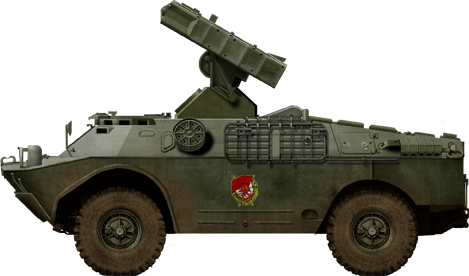
9K31 belonging to the red guards
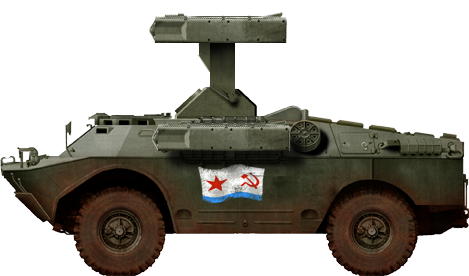
9K31 of the Soviet Navy, 1980
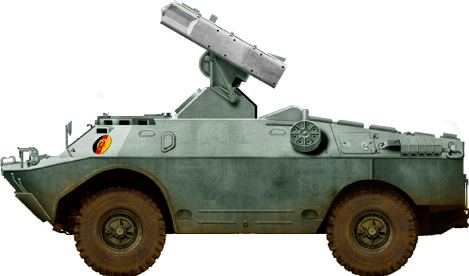
East German Vehicle, with its pale olive livery
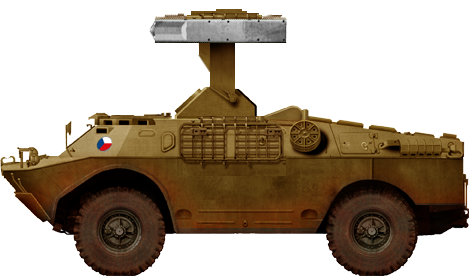
Czech vehicle with a brown livery
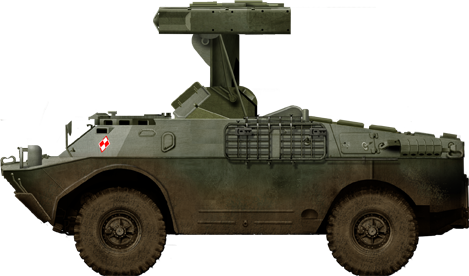
Polish vehicle
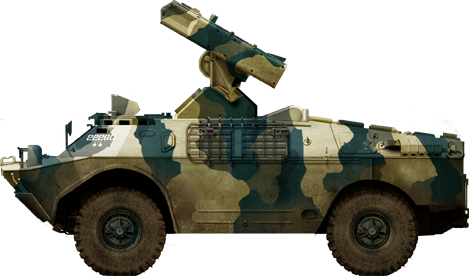
Serbian vehicle, 1990s war
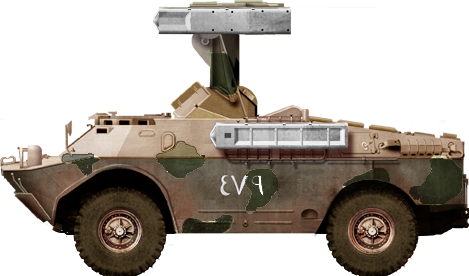
Iraqi 9K31 Strela 1, 1991
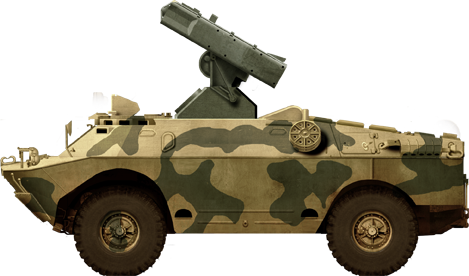
Syrian 9K31
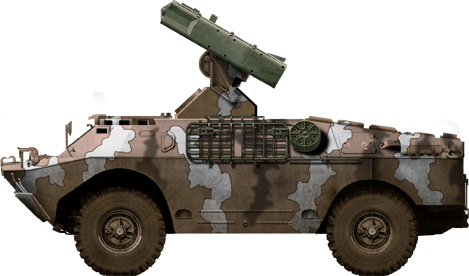
Croat 9P31 Strela-1
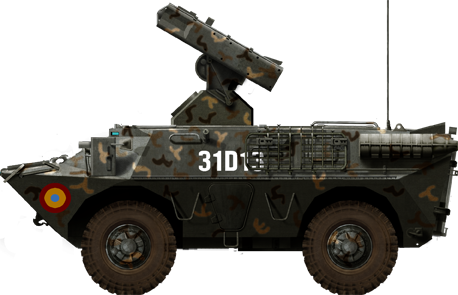
Derived Romanian CA-95M
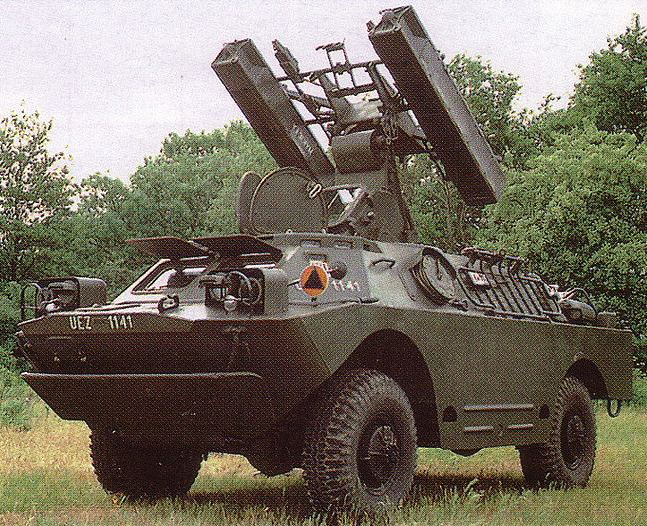
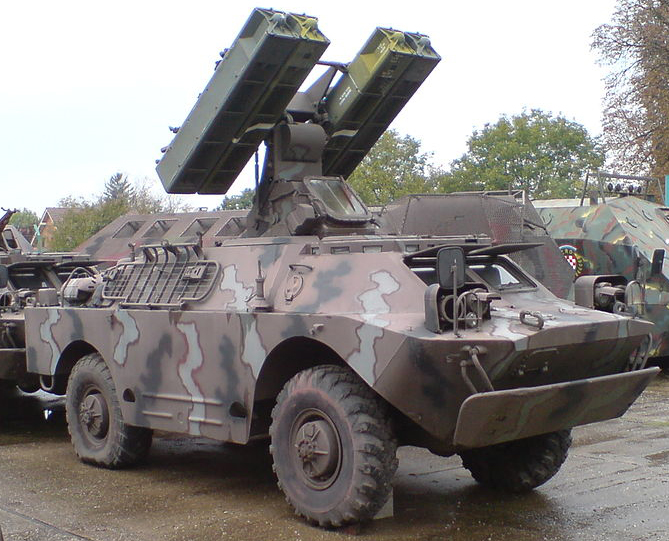
Croat SA-9 system
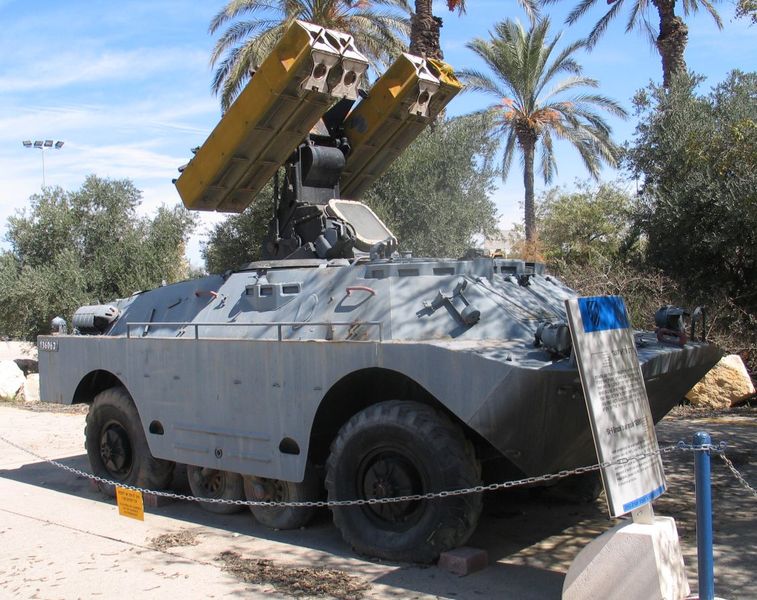
Captured vehicle by the IDF at Hatzerim. Note the lowered roadwheels, suggested the vehicle was originally a converted BRDM-2.
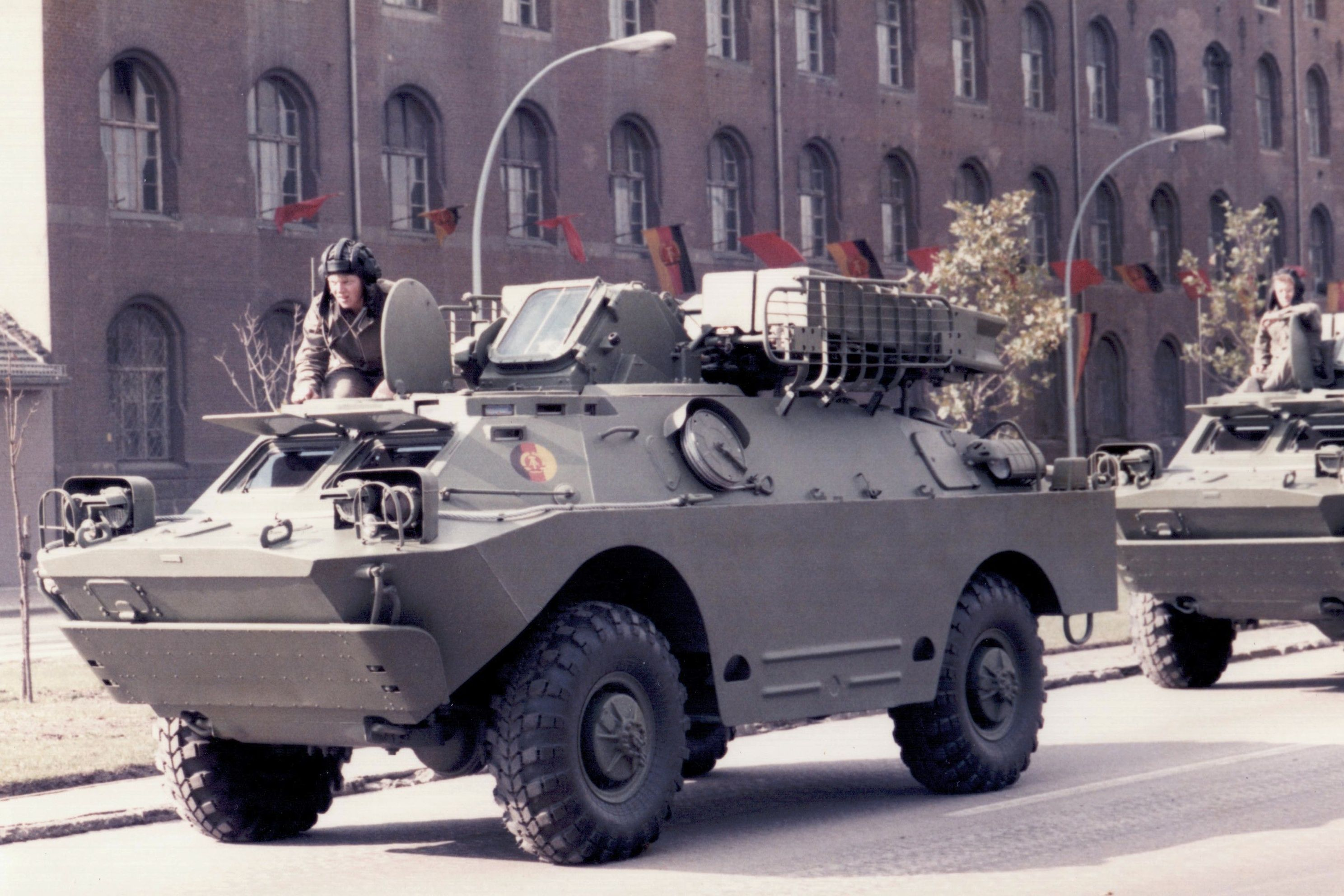
East German vehicle in parade, folded launcher
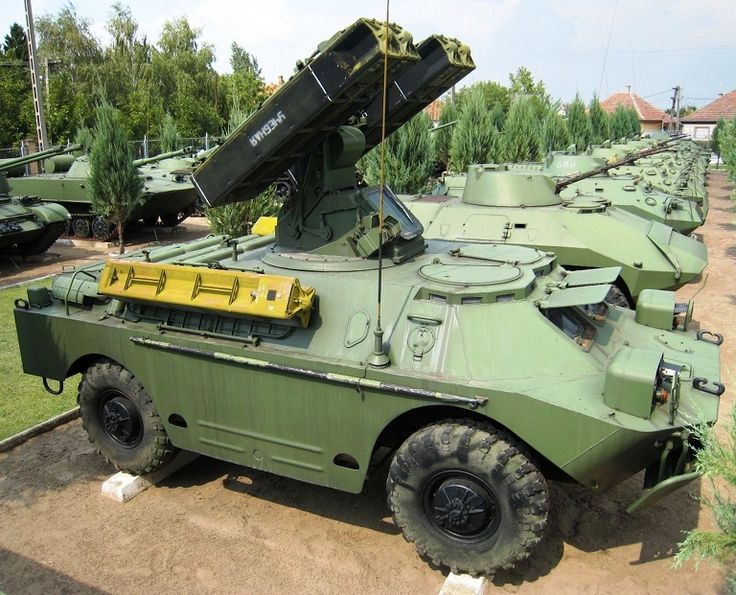
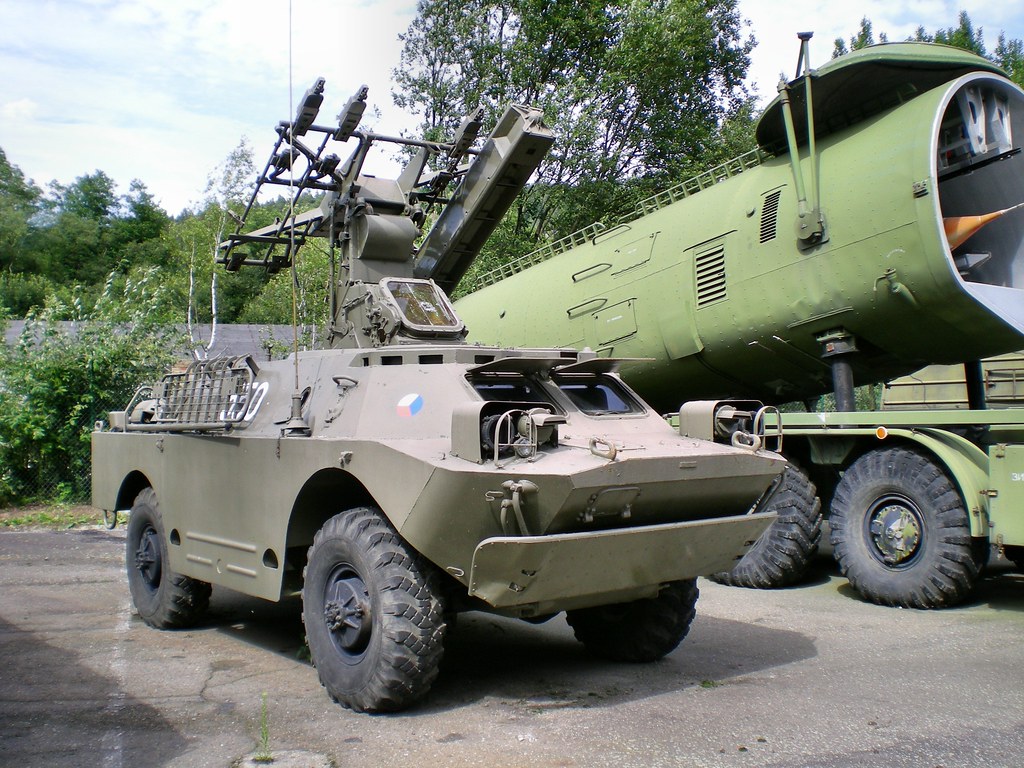
Czech vehicle, showing a stripped mount.
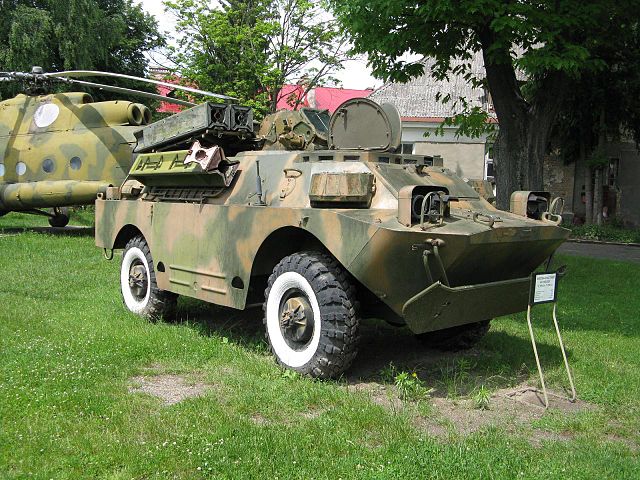
Ukrainian vehicle preserved in Lutz

Cold War Tanks


































Cold war tanks posters

Cold War Main Battle Tanks

Cold War Soviet Army

